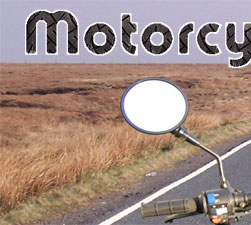|

|
Amid the excitement
of getting your M endorsement and purchasing your first motorcycle,
do not neglect the important step of getting insured. Not only will
insurance protect you financially in the unfortunate event of an
accident but it's also the law.
When researching your first
bike, do not forget to consider the cost of insurance. While
bare bones liability insurance on a standard motorcycle can
be quite affordable, buying coverage on high performance motorbikes
like the Suzuki Hayabusa can cost thousands of dollars. Obviously,
it isn't a wise move to buy a motorcycle you can't afford
to insure. A number of factors can influence the cost of motorcycle
insurance. Motorcycles with high horsepower tend to have higher
insurance costs whether it is the result of a large engine,
turbocharger or other power booster. The make and style of
bike contributes to the cost of motorcycle insurance as well.
Cruisers, Standard motorcycles and dual sport bikes tend to
be cheaper to insure than sport bikes and high performance
machines. Brands such as Harley-Davidson and BMW tend to command
a premium price when it comes to motorcycle insurance. A large
factor in determining the cost of insuring your motorcycle
is the type of coverage you opt to purchase. Understanding
the terms and jargon can be a little overwhelming at first
but is important in making wise decisions concerning your
insurance. Note: insurance options vary from state to
state and from provider to provider. The information provided
here is to be used simply as a guide. All coverage details
should be outlined by your particular policy.
Bodily Injury & Property Damage Liability: Motorcycle liability
insurance covers the cost of any damage you do to other persons
or property. It is a legal requirement to carry liability insurance
while other aspects of coverage are optional. When deciding between
two insurance packages, it is often wise to take the one with
higher liability coverage since bills will mount quickly if personal
injuries are sustained because of an accident. Coverage is noted
as three numbers formatted as: bodily injury per person/bodily
injury per accident/property damage.
If the coverage you purchase has liability coverage of 15/30/10
then- A maximum of $15,000 will be paid per individual to cover
bodily injury expenses
- A maximum of $30,000 will be paid per accident to cover
bodily injury expenses
- A maximum of $10,000 will be paid per accident to cover
property damage
Comprehensive and Collision Coverage: Comprehensive and collision
motorcycle insurance covers the costs associated with repairing
or replacing your motorcycle if it is damaged or stolen. This
insurance will cover your bike regardless of who is at fault and
is usually not required by law since no one else will suffer financially
for harm that comes to your bike. Collision coverage pays for
damage sustained when your motorcycle collides with something.
Comprehensive motorcycle coverage covers repair costs when damage
is sustained in other ways including theft, vandalism or fire.
Make sure you check with your insurance agent to find out if there
are any exceptions or gaps in coverage. There really is no point
in carrying comprehensive or collision coverage beyond the value
of your motorcycle.
Uninsured/Underinsured Motorist Coverage: This component of motorcycle
insurance will cover expenses you incur when the other party is
at fault but does not have insurance to cover pay your expenses
or your expenses exceed the limits of their insurance. Uninsured
or Underinsured Motorist insurance will usually pay for vehicle
damage, medical treatment, and can even extend to cover wages
lost due to accident related injuries.
Medical Payment Coverage: As the title implies, this component
of motorcycle insurance provides coverage for medical treatment
of accident related injuries. While this coverage can be used
regardless of fault, there is usually a time limit and dollar
amount limit. Many riders opt not to carry this type of coverage
because they feel their regular health insurance will cover potential
injuries. It is important to research this coverage before deciding
on a policy since, in certain states, Medical Payment coverage
will only begin to pay out once other medical insurance coverage
is exhausted.
Custom Parts and Equipment Coverage: This motorcycle insurance
option is designed to cover parts on your bike that are not stock
OEM parts. Usually, some coverage of custom parts is included
in standard coverage (often up to $1000). If you have added parts
to your bike beyond that, it can be a wise choice to include this
coverage. There is usually a ceiling on the amount of aftermarket
part coverage you can purchase. This insurance component can extend
to just about anything on the bike that didn’t come directly
from the manufacturer including exhausts, brakes, jetting kits
and sometimes will go as far as to cover custom paint jobs and
collision damage to helmets. To minimize potential hassles in
filing claims against this part of your insurance policy, it is
wise to keep photographs on file of aftermarket parts as proof
in the event of motorcycle theft or damage.
Roadside Assistance: Getting stuck on the side of the road is
never pleasant in any vehicle but when a motorcycle is involved
it can be much more hazardous. Motorcycles do not offer any shelter
from the elements or from passing vehicles. Roadside assistance
usually provides 24/7 towing or roadside repair any time the vehicle
is disabled. Many riders prefer to rely on third party roadside
assistance providers, notably AAA, instead of adding it to their
insurance policy.
|






